Your landing page optimization tools decides whether your landing page will be able to deliver results in the long run.
HubSpot reports that average landing pages manage a mere 5% to 15% conversion rate. But with strategic optimization, this figure can easily soar to a whopping 30%. How?
The key here lies in leveraging the best landing page optimization tools. You’re in the right place to explore a list of elite tools you should equip yourself with to enhance your landing page conversions.
But before we proceed with the list, let’s consider how many landing page optimization tools you’ll need.

We’ve divided the top landing page optimization tools into four categories, with drawbacks and benefits for each. This will enable you to concentrate on individual optimization phases sequentially.

The following tools are all-encompassing options that aid as landing page optimization tools and builders. If that’s what you’re seeking, you might find what you need right below:
Praised for its versatility, Unbounce is a widely-used tool that allows you to craft custom landing pages using over 100 templates or from scratch. Its intuitive drag-and-drop builder ensures simplicity.

More than a simple builder, Unbounce also doubles as one of the best landing page optimization tools with peerless A/B testing features. Though it conducts only one type of testing, it’s perfectly equipped to optimize your pages.
If you’re stuck when writing your own copies, don’t worry. Unbounce’s smart builder is driven by AI insights derived from over a billion conversions, enabling you to construct improved pages. Additionally, its smart traffic system directs visitors to the most relevant landing page variant.
The tool also offers helpful copy suggestions, reducing time spent crafting marketing messages. Plus, by adding exit-intent pop-ups to your pages, it helps boost signup rates from unsure visitors.
Pros:
Offers the ability to customize landing pages and formulate various versions for A/B testing.
Accommodates integrations with prominent analytics and optimization tools like VWO, UsabilityHub, Google Analytics, UserTesting, and Hotjar.
Includes an intelligent traffic system for improved testing.
Features industry-specific, professionally crafted landing page templates and easy-to-use features, including a drag-and-drop interface.
Makes use of AI for suggested copywriting and design strategies.
Cons:
Lacks support for multivariate or split URL testing.
Does not extend a include global templating option.
Instapage emerges as one of the leading landing page builder tools, allowing users to craft unique landing pages, develop variant pages, analyze customer behavior, and conduct practical experiments. Furnished with all vital content builder assets, it empowers you to construct responsive landing pages.
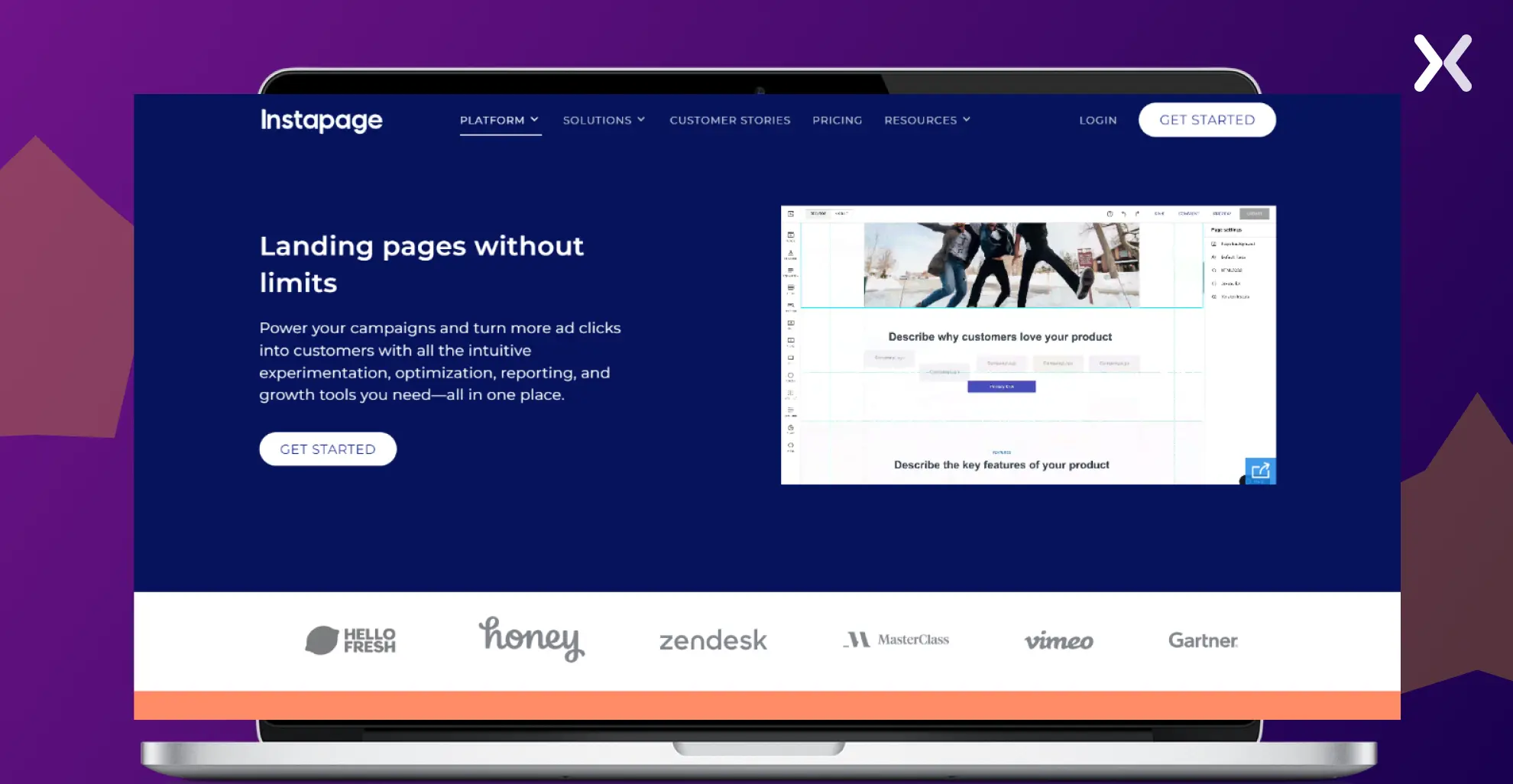
Beyond just providing ready-to-use templates and a user-friendly drag-and-drop editor, Instapage is brimming with standout features. These include AdMap – a significant plus for PPC marketers handling multiple landing pages, advanced analytics, comprehensive A/B testing options, data quantification, session replays, and more.
Further enhancing its appeal as a landing page optimization tool is Instapage’s WYSIWYG editor, which lets you witness landing page alterations in real-time.
Pros:
Includes in-built heatmaps for monitoring user behavior on your landing page and evaluating their overall experience.
Features Instablocks, which support the design and storage of reusable content blocks for use across different landing pages, thereby simplifying design scaling.
Enables integration with prominent marketing automation software such as HubSpot, Autopilot, Marketo, and more.
Provides A/B testing feature to investigate variations of your landing page.
Offers a free trial period, decreasing upfront commitment risks.
Cons:
Notably high-priced, which may deter smaller companies or those with tighter budgets.
Its A/B testing feature is not available in the basic starter plan.

“Dedicated landing page builders like Unbounce and Leadpages offer ease of use and built-in A/B testing, unlike HubSpot, which may require you to opt for higher plans, and WordPress, which lacks conversion-focused features. However, when it comes to scaling, WordPress allows for easier template creation and replication for larger projects.”
The essence of qualitative analysis lies in comprehending user behavior, a task simplified by tools such as heatmaps and session recordings. It determines if your landing page effectively caters to your target audience’s needs. Now, let’s explore which landing page optimization tools are best suited for this task.
Hotjar presents a comprehensive suite of conversion optimization tools, including heatmaps, real-time surveys, session recordings, and feedback widgets. It allows you to not only observe visitor interaction with your landing pages but also gauge visitor sentiment through surveys.
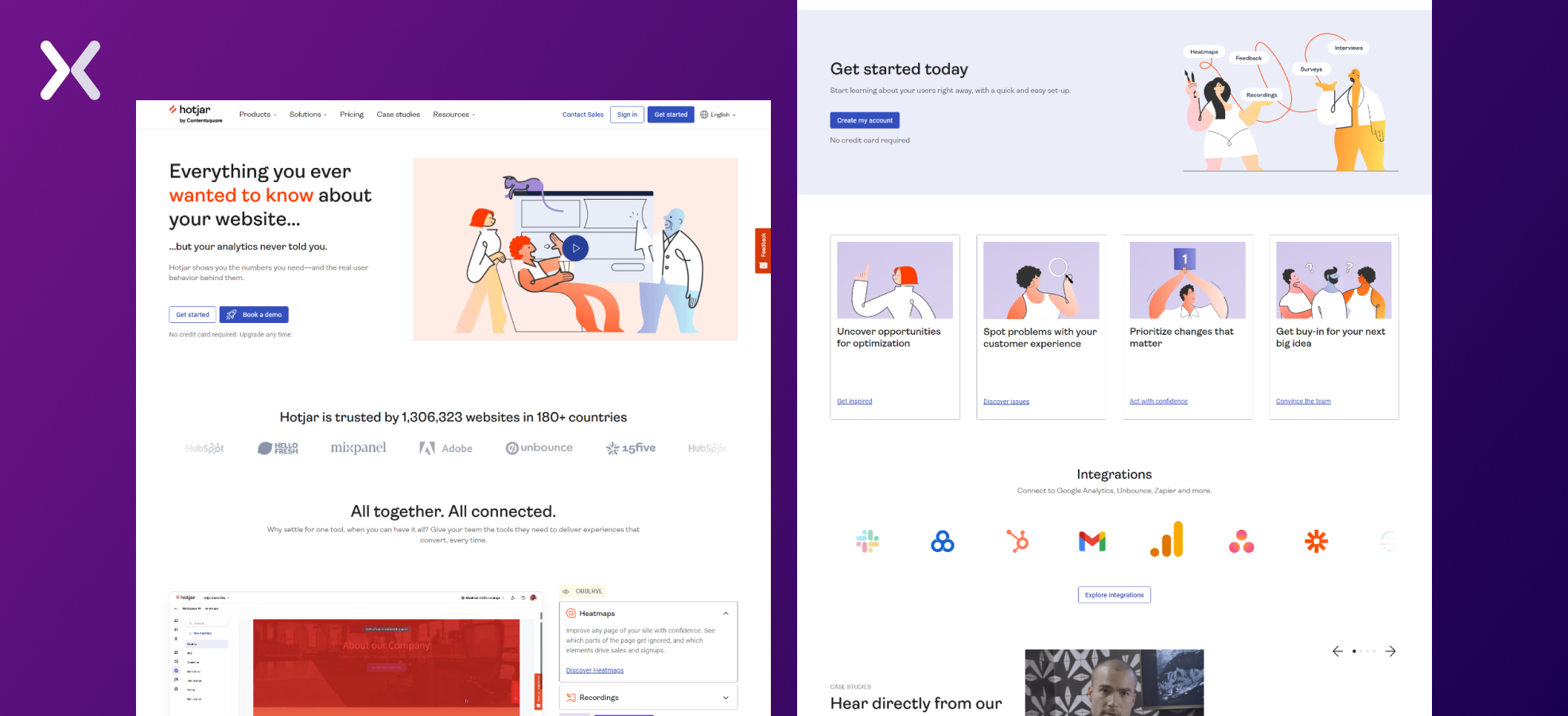
Dealing with landing page optimization entails wading through vast pools of data – qualitative and quantitative alike. Hotjar’s dashboard offers a consolidated view of user data, allowing you to flag issues early, identify emerging trends, and delve into deeper insights.
Pros:
Offers session recording features with u-turn, rage, and referrer filters to monitor visitor website interactions.
Features timing or action-based survey prompts for real-time feedback collection.
Allows easy integration with other tools like Unbounce, amplifying effectiveness.
Cons:
Restricts sharing heatmaps outside the Hotjar dashboard user base, hindering easy data visual sharing.
Lacks a comprehensive form analysis feature.
Slows down page load time.
This tool is primarily for comprehensive website optimization, examining visitor actions, delving into buyer journeys, pinpointing audience segments, and detecting potential issues. Crazy Egg even enables goal setting for more granular webpage analysis.

Valuable for novices, its visualized evaluations of landing page variants simplify analysis. The tool amasses valuable insights for reports, spotlighting form analytics – such as the impact of specific words on customer conversion – while mapping the effect of color and content placement on user behavior.
Pros:
Real-time user interaction tracking capabilities, spotlighting areas causing customer distress.
CrazyEgg offers granular insights into specific audience segments.
Intuitive and effortless installation and navigation processes.
Cons:

VWO has a noted reputation for its stellar A/B testing tools, yet it provides an extensive suite of optimization utilities beyond A/B testing. It includes session recordings, heatmaps, and form analytics.
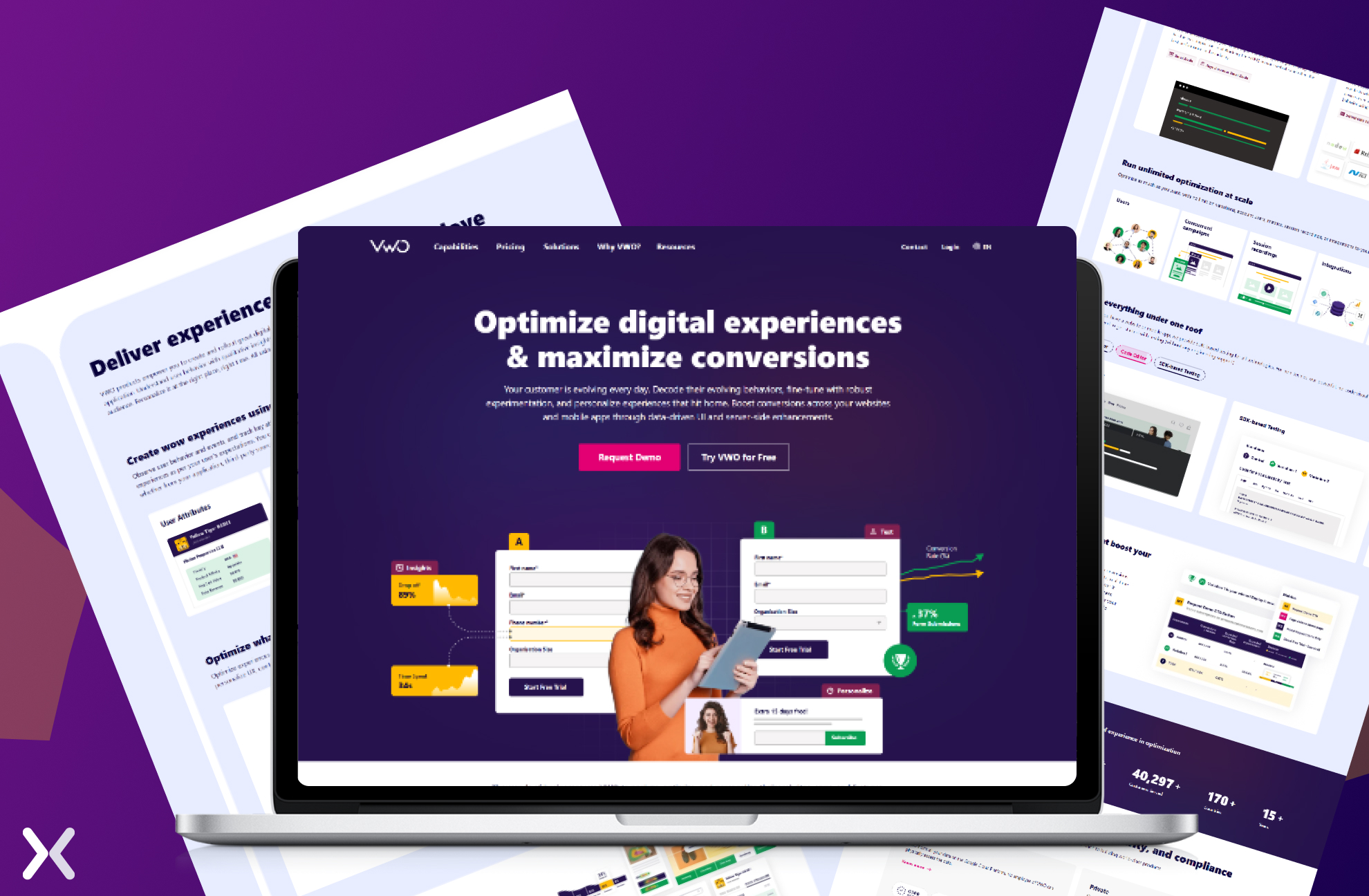
With VWO, hassle-free report creation is possible, even without any technical expertise. This platform allows comprehensive testing of your entire marketing funnels. With its session recordings and heatmaps, you can delve into each customer’s journey in granular detail.
Furthermore, this tool integrates seamlessly with your content management software (CMS), enabling landing page edits without code disruption or the need for a developer. Its point-and-click editor simplifies the editing process, keeping things swift and smooth.
Pros:
Offers a comprehensive range of tests, including A/B, Multivariate, and Split URL.
Utilizes Bayesian statistics for a fast and accurate prediction of your landing page’s best-performing version.
Enjoy responsive and swift support via web app chat from the VWO team.
Cons:
A significant chunk of visitor allotment is consumed in obtaining results.
Invoke advanced implementation through the code editor rather than the visual editor for some tests, which may be complex for some users.
Crafting compelling landing page copy can be daunting due to brevity constraints. Wynter is a focused tool aimed at refining your landing page copy.
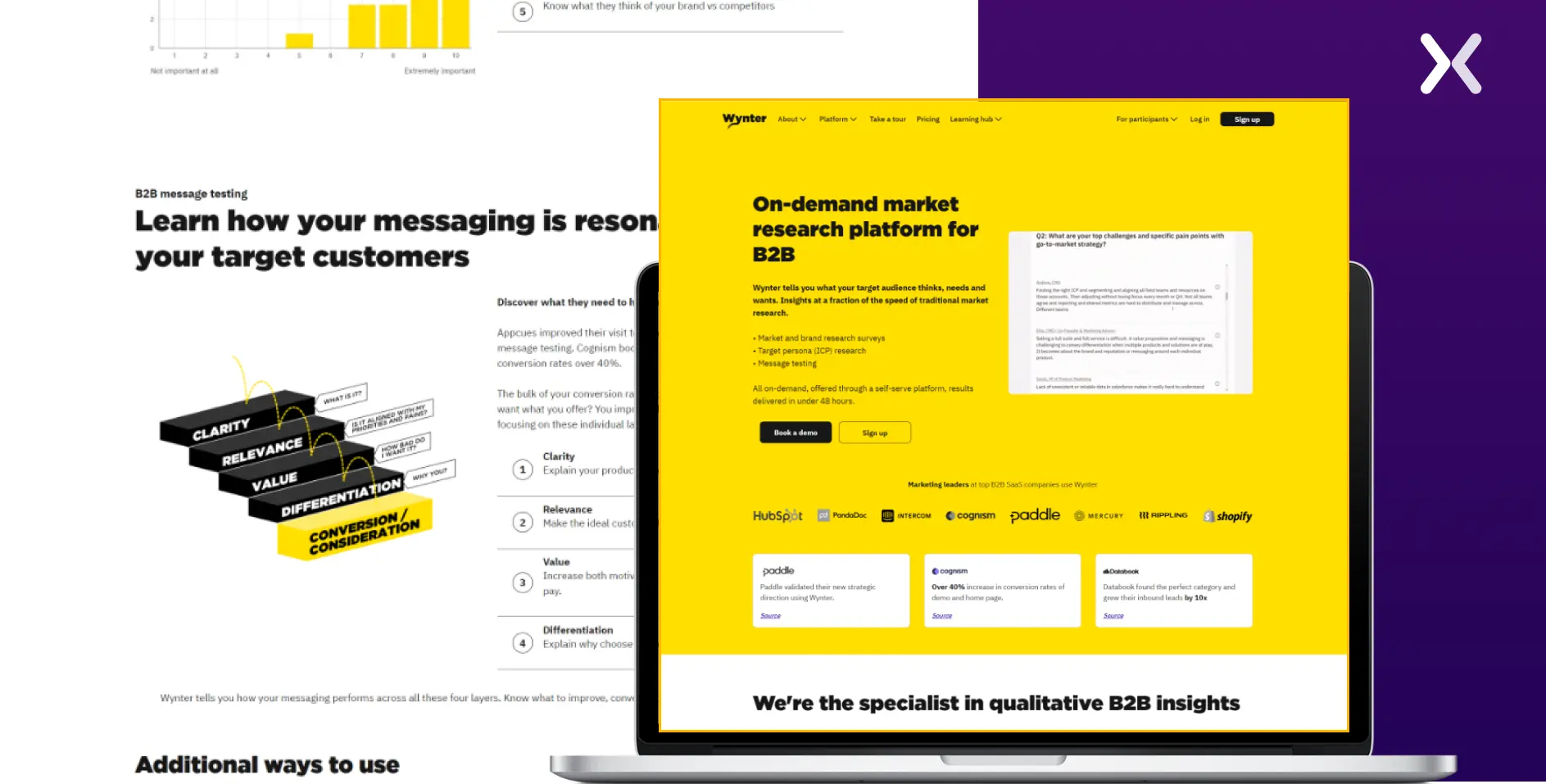
Specializing in landing page optimization through copy, Wynter helps gauge your target audience’s reception of your messages. Remember, effective messaging can drive your sales, making copy testing an integral part of optimizing landing page pages.
While Wynter may lack builders or A/B testing features, it provides the insights needed to elevate your landing page copy.
Pros:
Swift message testing results enabling rapid copy modifications.
Praised flexible, easy-to-use self-serve platform for crafting tailored tests.
Cons:
UsabilityHub serves as a comprehensive platform for user testing and usability research. It empowers developers to detect design flaws early, saving significant time and effort.
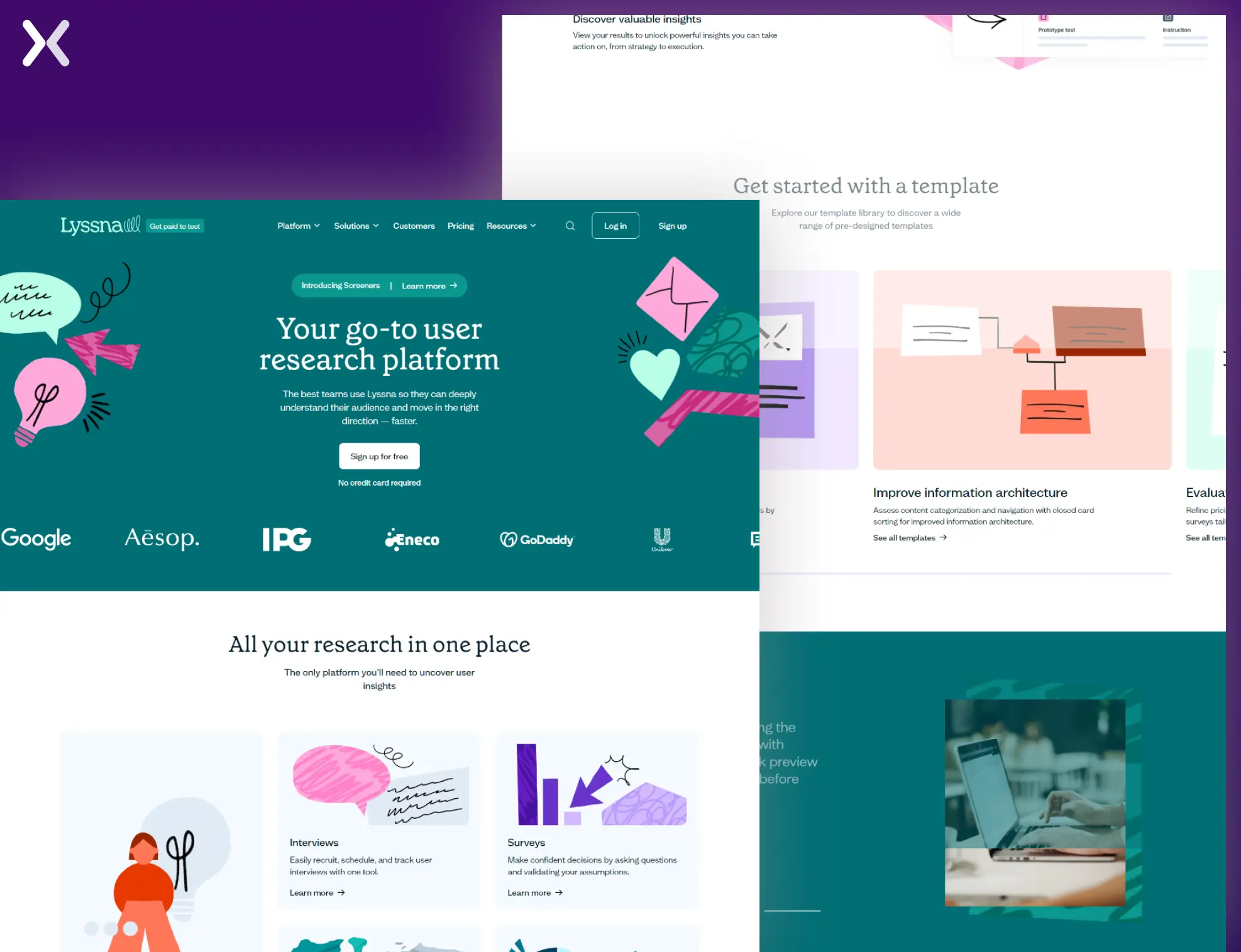
Even better, its users can gauge the efficacy of their design’s links and content structure by tracking user interactions.
Its enhancements include:
Preferential analysis to ascertain favored landing page designs and underlying rationales.
Five-second assessments to comprehend initial impressions and content legibility.
Prototype evaluations for appraising navigational aspects in pre-launch landing page prototypes.
Design questionnaires for gathering feedback on diverse varieties of media.
All in all, UsabilityHub is dedicated to elevating landing page design standards.
As audiences’ attention spans decrease, marketers need tools to help optimize a landing page’s first impression. The Five Second Test tool does exactly that. Though this is one of Lyssna/ Usability Hub’s features, it needed a separate mention.
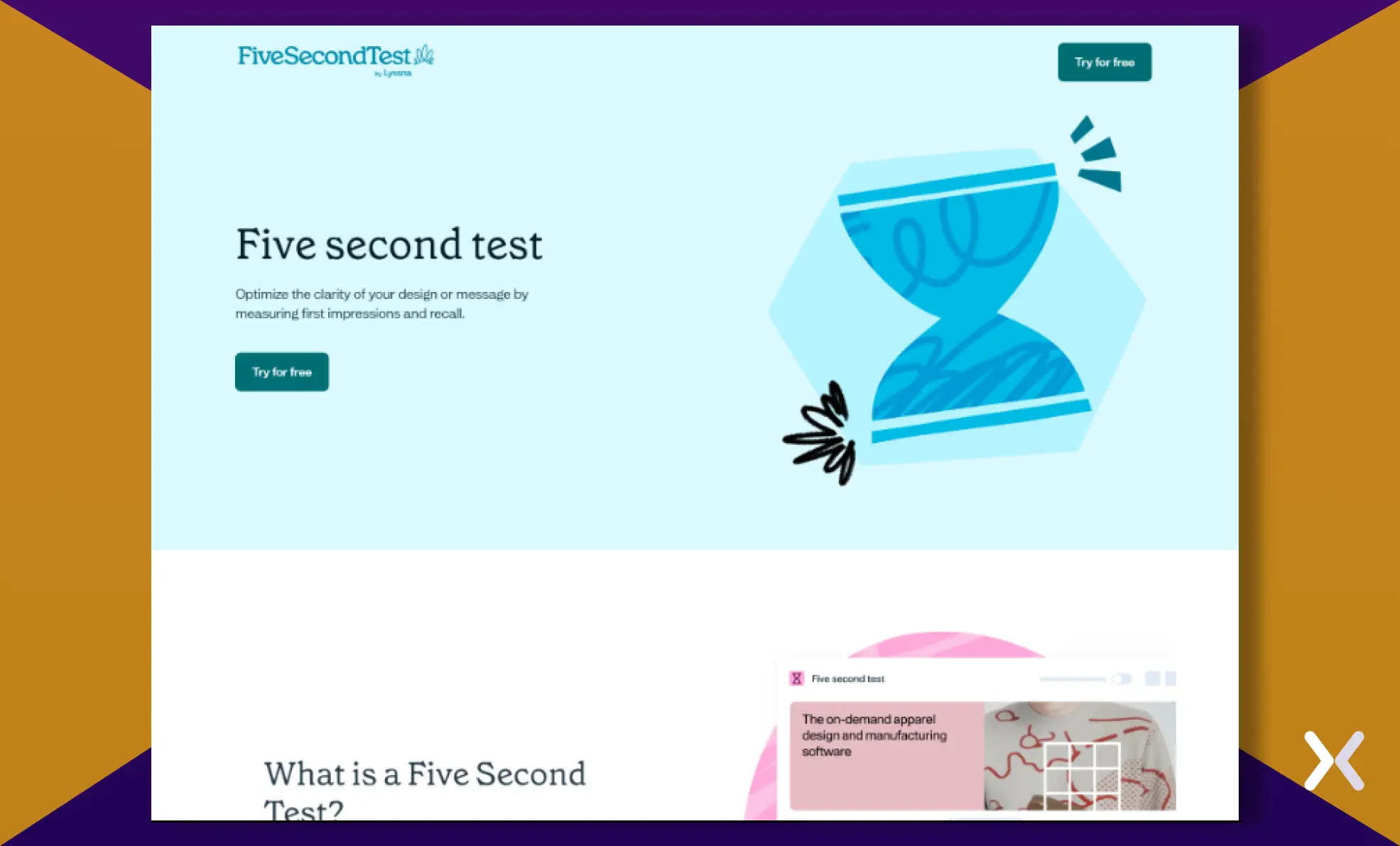
Being one of the best landing page optimization tools, it shares your landing page with a random selection of users to assess their first impressions. By analyzing which elements and design patterns users remember and determining how many understand the page’s purpose, the tool ensures you can optimize the page for higher effectiveness.
Pros:
Optimizing based on first impressions can lead to a more intuitive and user-friendly design.
Provides clear metrics on recall and understanding, helping you measure the effectiveness of your design.
Empowers you to make informed decisions based on actual user behavior and feedback.
Cons:
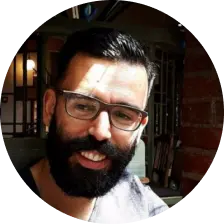
“A top-tier landing page optimization tool should offer comprehensive analytics and reporting features, including real-time performance tracking, conversion metrics, heatmaps, and user flow analysis. Additionally, it should provide insights into user interactions, split testing results, and demographic data to help refine strategies and make data-driven decisions. Customizable reports and integration with other analytics platforms are also crucial for a holistic view of performance.”
Securing an appropriate set of metrics for quantitative analysis of your landing page success is critically important. This data-driven evaluation aids in determining whether your landing pages align seamlessly with your sales funnel. Below are some landing page optimization tools that help secure quantitative data efficiently.
Maintaining a pulse on web analytics is crucial for insight into the starting and ending points of your landing page optimization journey. Google Analytics 4 (GA4) stands as one of the most excellent landing page optimization tools for assessing your landing page metrics.

Google Analytics offers a free in-depth analysis of user interactions on your landing page. The valuable insights contribute to a more profound understanding of how visitors engage with your landing pages.
Pros:
Showcases user engagement and experience via bounce rates and AdWord analytics tool provisions.
Facilitates conversion tracking through GA Goals by channel, campaign, keyword, etc.
Cons:
The Google Mobile-Friendly Test tool allows you to assess your landing page’s mobile responsiveness. Simply enter your URL and click “Test URL.” If your page passes, you’ll receive confirmation. If not, detailed improvement suggestions will follow.
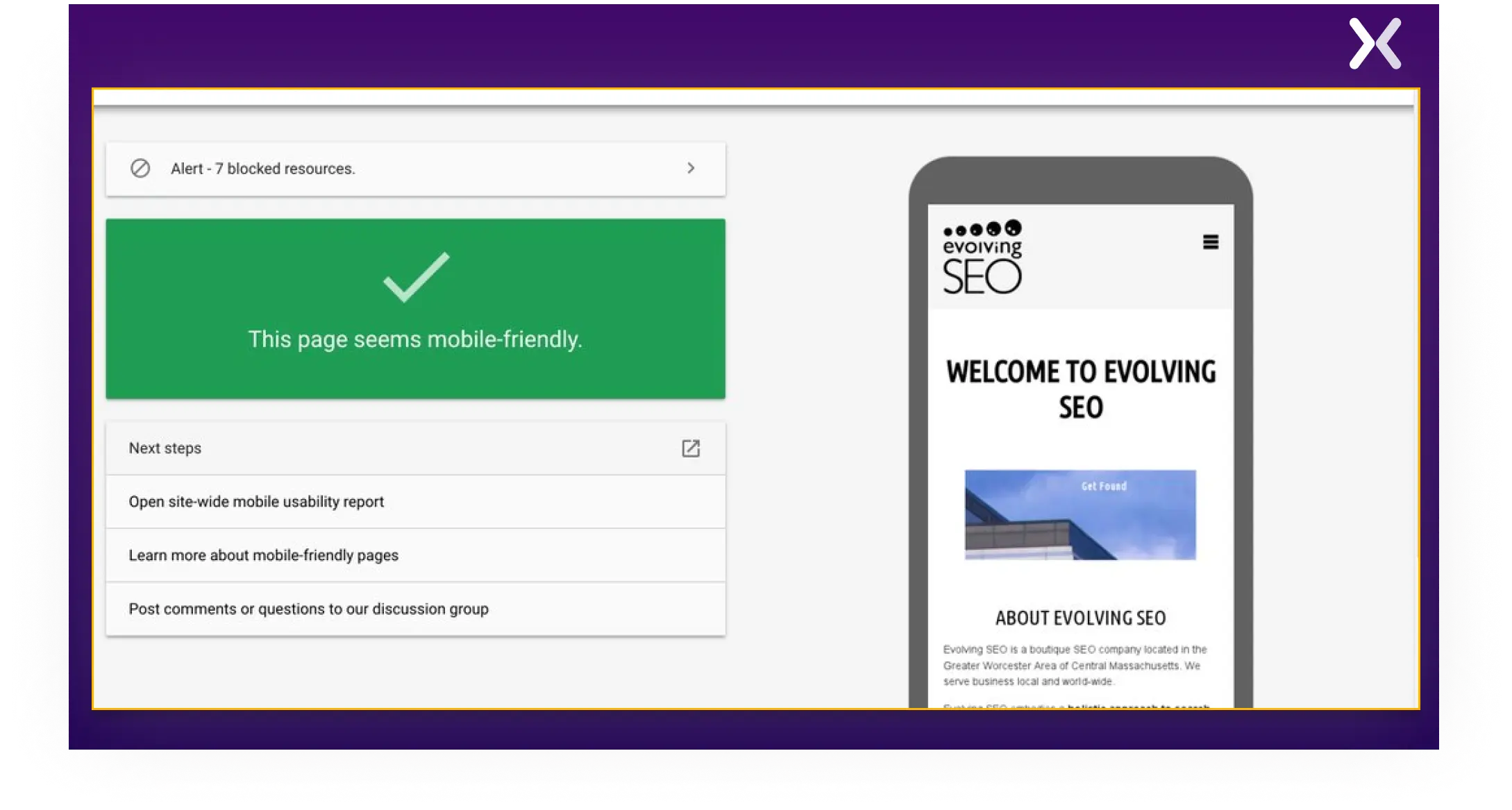
Recognizing that mobile-responsive design is the new standard – indispensable to Google and most businesses alike – this reliable tool helps ensure your pages shine on mobile screens. And the cherry on top? It’s a free tool.
Another free tool, PageSpeed Insights, assesses a website’s performance and speed on desktop and mobile realms. It is aimed at aiding website owners and developers to optimize their sites for faster loading, elevated user experience, and superior search engine standings.

This tool quantifies diverse performance metrics, bestowing viable suggestions to enhance website efficiency.
Pros:
Assigns distinctive scores for mobile and desktop versions, enabling focused, individual optimization.
Boosts search engine ranks as Google counts page speed among its ranking factors.
Presents valuable analytics, including LCP, FID, and more.
Cons:
Scores may fluctuate relative to device, internet connection, and server response times.
While the insights are insightful, technical implementation may be complex for non-technical users without developer support.
Mouseflow’s form analytics helps you understand user interactions with forms on your website and landing page.
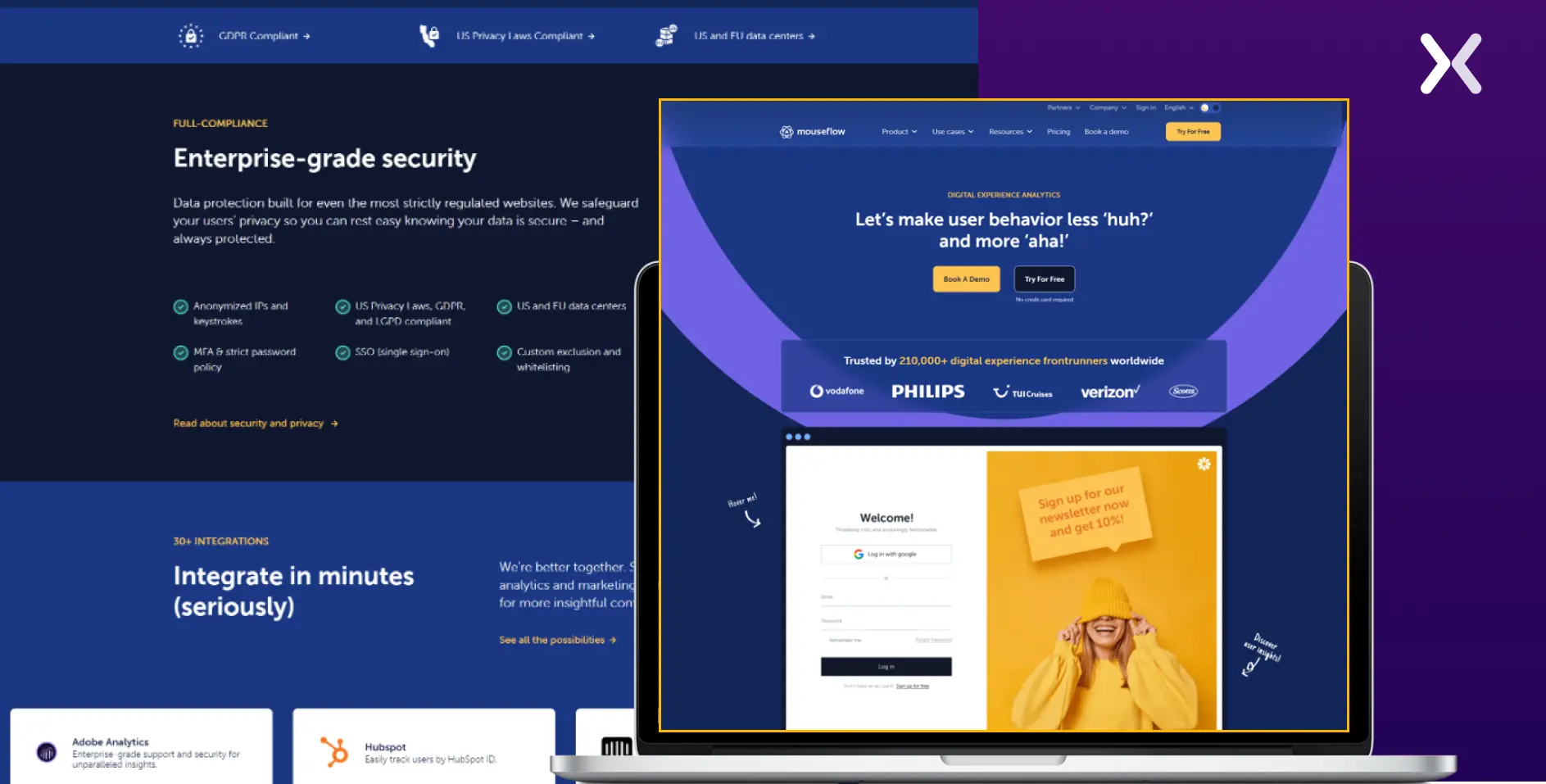
It offers field-by-field analysis, tracking how users engage with each form field, detecting errors, and identifying drop-off points. As one of the most interesting landing page tools, it allows you to see which fields cause delays, confusion, or abandonment, enabling you to make targeted improvements.
By leveraging these insights, you can enhance the user experience, reduce form abandonment, and increase conversion rates. Mouseflow’s form analytics provides the data you need to optimize form design and functionality, ensuring a smoother and more effective form completion process.
Pros:
Provides precise identification of problem areas in the form that cause user drop-offs or delays.
Tracks submission failures and validation errors, helping to quickly identify and fix issues that prevent users from completing forms.
Offers valuable data for optimizing form design and layout, which can lead to higher completion rates and improved user experience.
Cons:
The detailed analytics and data provided can be overwhelming for beginners or those unfamiliar with data analysis, potentially requiring a learning curve to fully utilize the feature.
Setting up form analytics and integrating it into existing workflows might require significant time and technical resources, particularly for complex forms.
While qualitative tools like Hotjar and CrazyEgg aid in landing page monitoring, there are other tools – which we’re about to explore – that further fine-tune the monitoring of specific funnel aspects like design and uptime. Let’s look at some of the best landing page optimization tools for monitoring.
Hexometer, an uptime monitoring your SaaS tool, employs advanced AI to identify issues on websites and landing pages autonomously. Providing round-the-clock surveillance, Hexometer promptly detects problems to avoid significant business impacts.
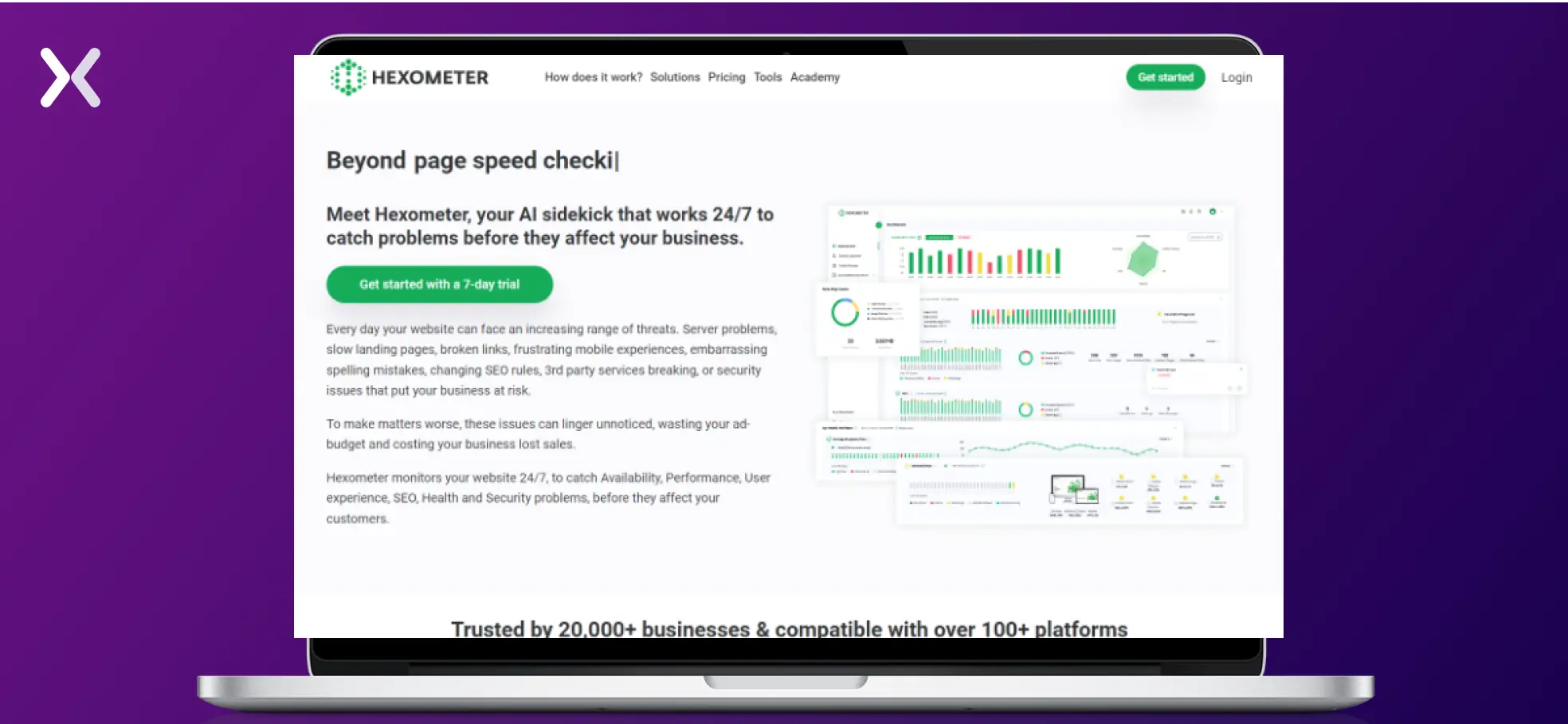
Among the standout features of this tool is its immediate alert system for error detection, enabling swift issue resolution. You can receive notifications conveniently via email, SMS, Slack, Telegram, or Trello.
Hexometer conducts precise checks on six pivotal website areas: availability, performance, user experience, health, SEO, and security, making it among the best landing page optimization tools.
Pros:
Safeguards ad campaigns via active landing page monitoring.
Allows tracking of landing page modifications and their effects on performance.
Cons:
Lacks a free plan option.
The user interface might seem initially perplexing.
This web archiving and monitoring tool automatically creates visual snapshots of web pages in assorted screen sizes. Users can track website alterations over time, making it a valuable asset for businesses needing historical online presence data.
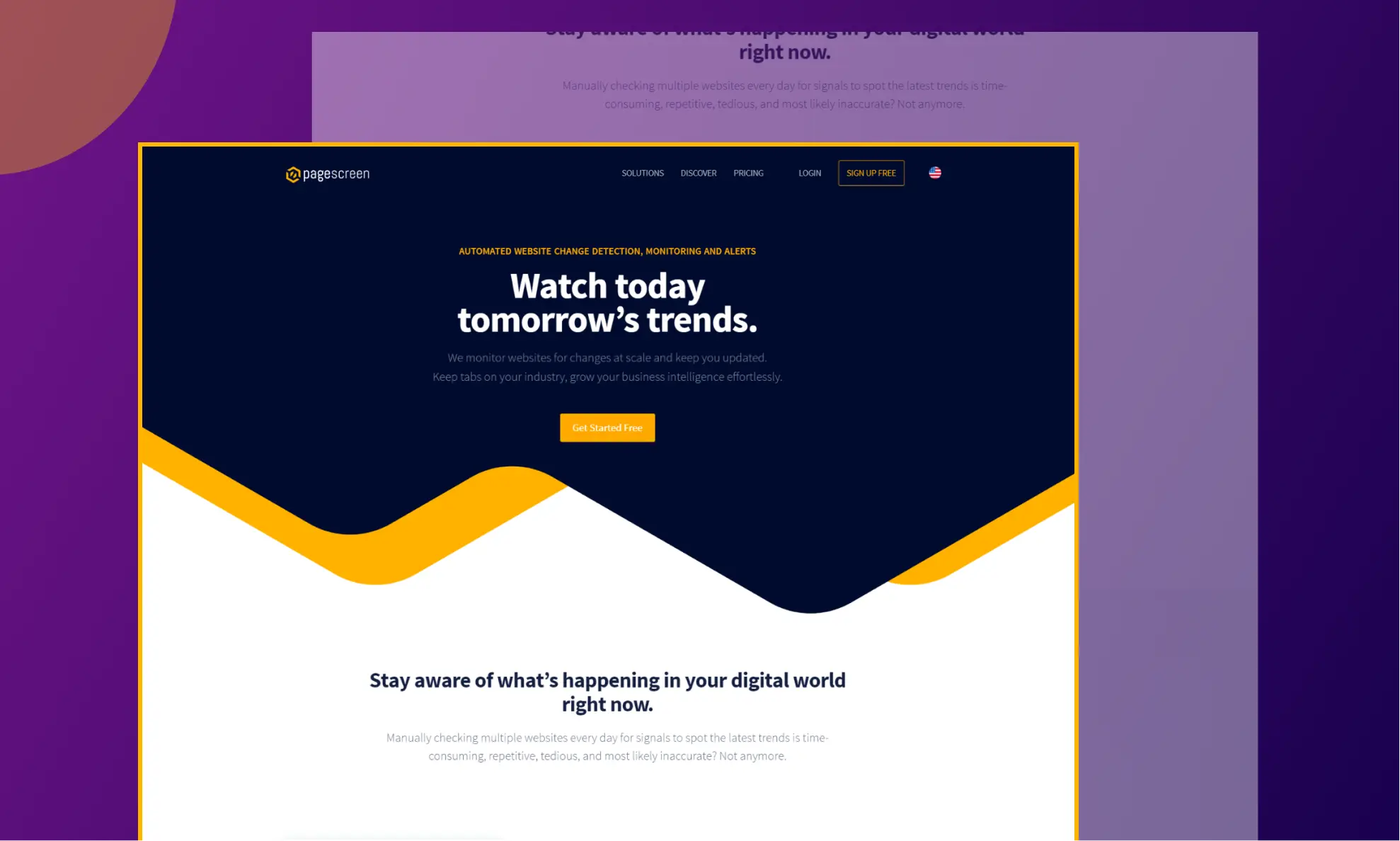
Keeping tabs on your business isn’t enough – monitoring competitors is also vital, which PageScreen can help streamline too. It’s basically the ideal tool for scrutinizing competitors’ landing pages.
Pros:
Users receive bespoke alteration alerts via email or Slack, facilitating team-based historical data analysis.
Accommodates multi-site monitoring via individual URL entries or bulk URL uploads.
Encourages organized screenshot storage with the creation of visual collections.
Cons:
Keyword research is vital for both SEO and PPC landing pages. This is where Ahrefs shines – providing a comprehensive evaluation of your landing page’s performance in Google’s eyes. Offering deep dives into SEO metrics, keyword trends, competitive landscapes, and backlink structures, Ahrefs is the perfect aid for your landing page optimization journey.
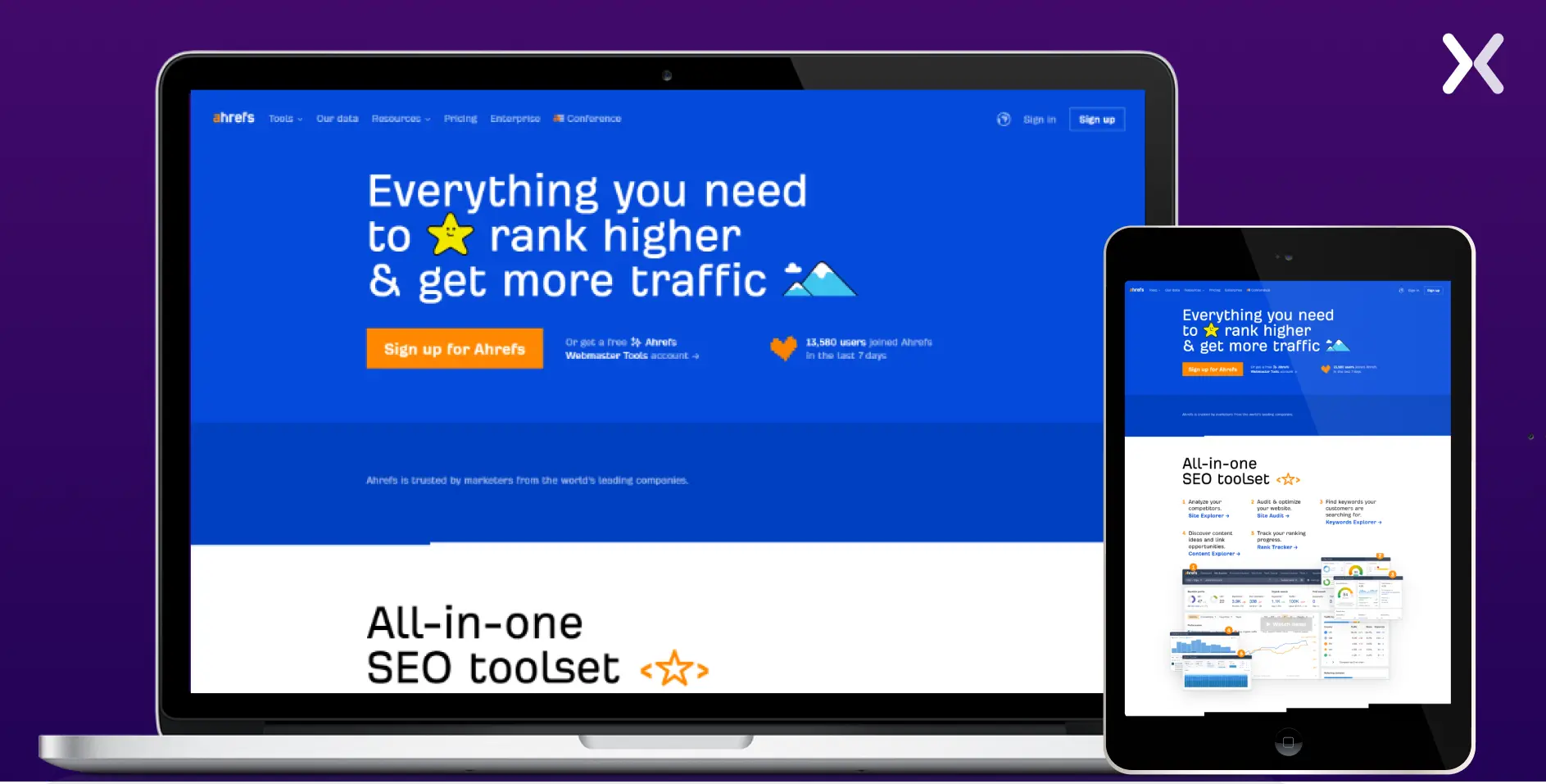
Pros:
Enables rank tracking for all targeted keywords.
Facilitates easy backlink and keyword profile analysis of competitors.
Assists in identifying new opportunities via keyword research.
Cons:
This post can not be completed without discussing the impact of AI on landing page optimization. Many AI-driven solutions are making waves in the market. We have discussed some crucial AI powered landing page optimization tools below.
UXsniff is an AI-driven tool that helps improve user experience and conversion rates.
AI helps it analyze session recordings and detect abnormal click patterns, perform UX audits, and give summaries using ChatGPT. The AI-driven optimization tool allows for quick insights without extensive manual review.
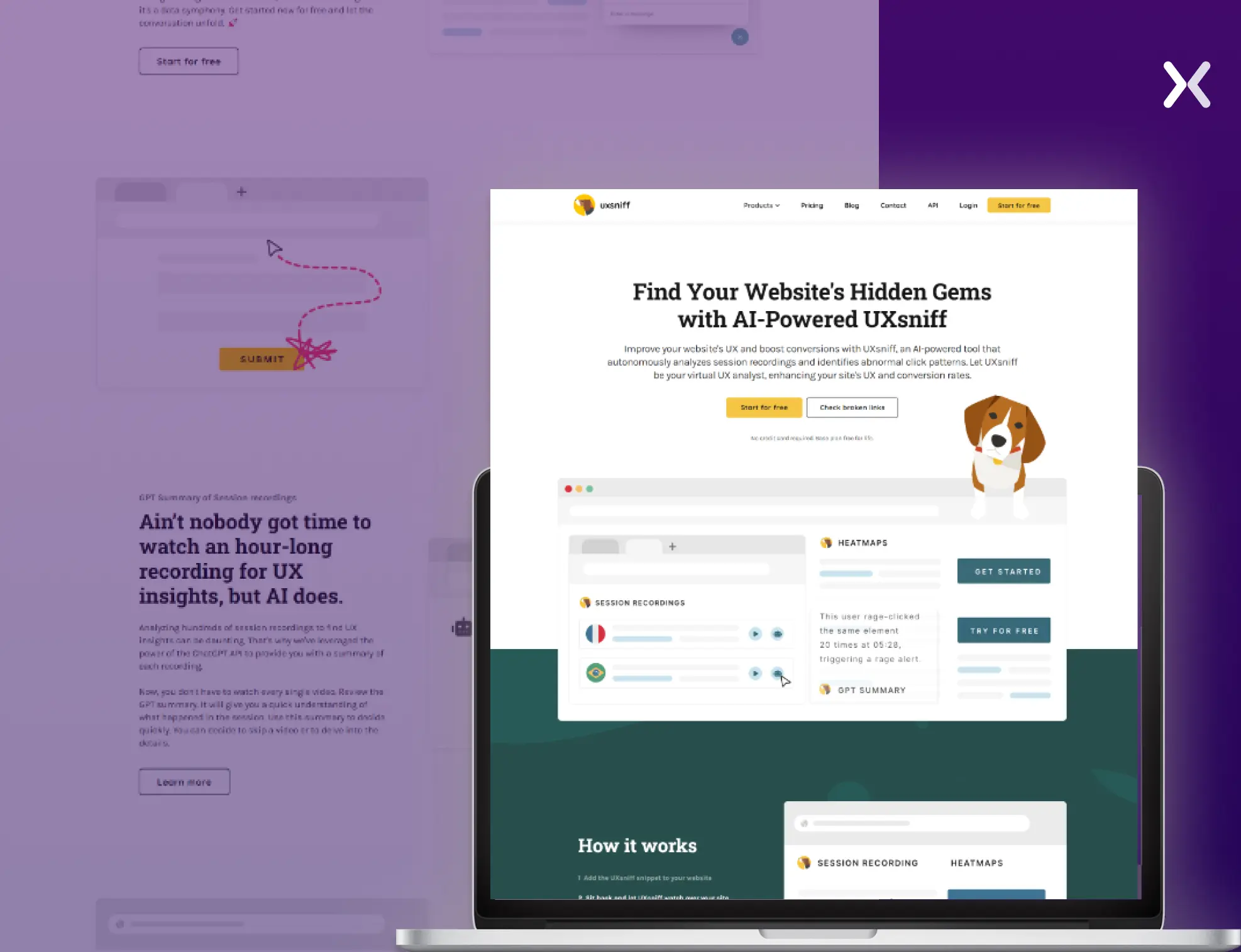
UXsniff also includes a feedback widget for collecting user opinions and an on-site survey builder to understand user preferences. It integrates with over 5000 apps via Zapier, facilitating the automation of UX audits.
Leadpages uses behavioral predictions to enhance marketing strategies by collecting data from various sources, such as website interactions, user demographics, past behaviors, and purchasing history.

This data is analyzed using machine learning models that identify patterns and trends to predict future behaviors, such as the likelihood of users converting or a landing page element confusing them.
These actionable insights are shared with the help of ‘Leadmeter,’ a Leadpages landing page builder feature that enables marketers to tailor their strategies effectively, targeting high-value customers and optimizing their campaigns for better performance and increased conversion rates.
Landing page optimization tools like Unbounce and Instapage similarly leverage AI to enhance landing pages and marketing effectiveness.
Unbounce uses Smart Traffic, an AI-driven feature dynamically routes visitors to the best-performing landing page variant based on their attributes, improving conversion rates with minimal manual effort. Instapage uses a similar approach under its testing feature called AI Experiments.

Both platforms harness AI to automate optimization processes, personalize user experiences, and maximize campaign performance, making them valuable landing page optimization tools.
To simplify your navigation through the plethora of landing page optimization tools we’ve explored, here’s a handy comparative table for your reference:

An abundance of options floods the market – but remember, you’re not obligated to utilize them all. Most landing page optimization tools offer comparable testing features, so what’s the ultimate gauge?
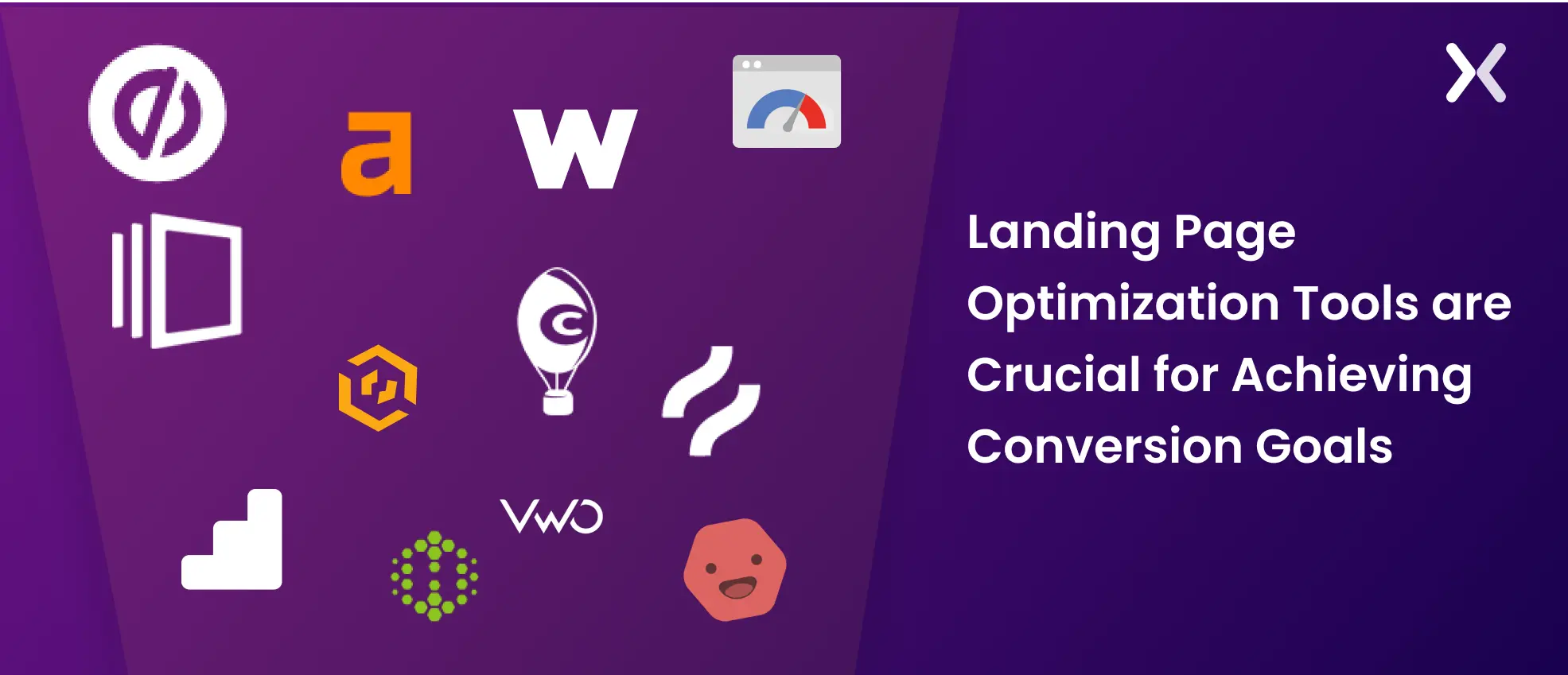
It’s simple: Your specific needs. Identify your landing page optimization strategy’s focus, which typically emerges from detailed research on your industry and target audience.
Let’s zero in on some essential features for a tool to merit consideration for your landing page optimization:

Opt for landing page optimization tools that integratesseamlessly with your fundamental tools as a marketer or growth manager. It includes customer relationship management (CRM) tools and sales software, providing enriched data insights, fluid workflow, personalized targeting, practical A/B testing, cohesive ad campaigns, effective conversion rate optimization, and instant updates.
You would certainly want to avoid winding up with landing page optimization tools requiring an expert’s touch, resulting in increased cost. The ideal landing page optimization tool must come with user-friendly features like a drag-and-drop editor and pre-designed templates; these help expedite page creation. Its interface should be intuitive, enabling straightforward design and management of landing pages.
The landing page optimization tools you choose should equally protect sensitive data, customer information, and business trust. Tools equipped with data encryption, secure hosting, regular updates, user authentication, access controls, and secure payment processing tick the right boxes.
Furthermore, the tool should offer data backup, recovery, comply with industry standards, and regularly undergo vulnerability testing.
A tool with multi-user accounts is pivotal in collaborative marketing, fostering central control, role-specific access, security, efficient workflows, and client accessibility. With boosted teamwork in marketing, you can simplify onboarding processes and be more effective with your marketing efforts.

“Common technical challenges with landing page optimization tools arise when businesses prefer to use their own CRM systems, like Marketo or HubSpot, due to GDPR concerns and data duplication. This can make it difficult to track conversions, especially when forms are built within the CRM instead of the optimization tool, like Unbounce.”
Landing pages are pivotal for propelling conversions and enhancing lead-generation campaigns. Overlooking their optimization could save you conversion opportunities and prevent business growth.
Given the vast array of landing page optimization tools, selecting the right one can seem daunting. Successful optimization necessitates ongoing testing, experimentation, and refinement for optimal outcomes.
Apexure has our 100+ blog posts to help you optimize your landing pages. From testing to analysis and optimization, we have shared everything. Check it out before optimizing your landing page.
Finding the right landing page optimization tools and then optimizing your landing pages is a lot of work. Get the help you need with our experts. Book a call and one of our landing page optimization experts will contact you soon.
Our landing page portfolio has the inspiration to help you design stronger and better landing pages. Filter your industry and check which landing page design is trending.
The best way to optimize a landing page is to use A/B testing to compare different versions and leverage the right tools to analyze visitor behavior.
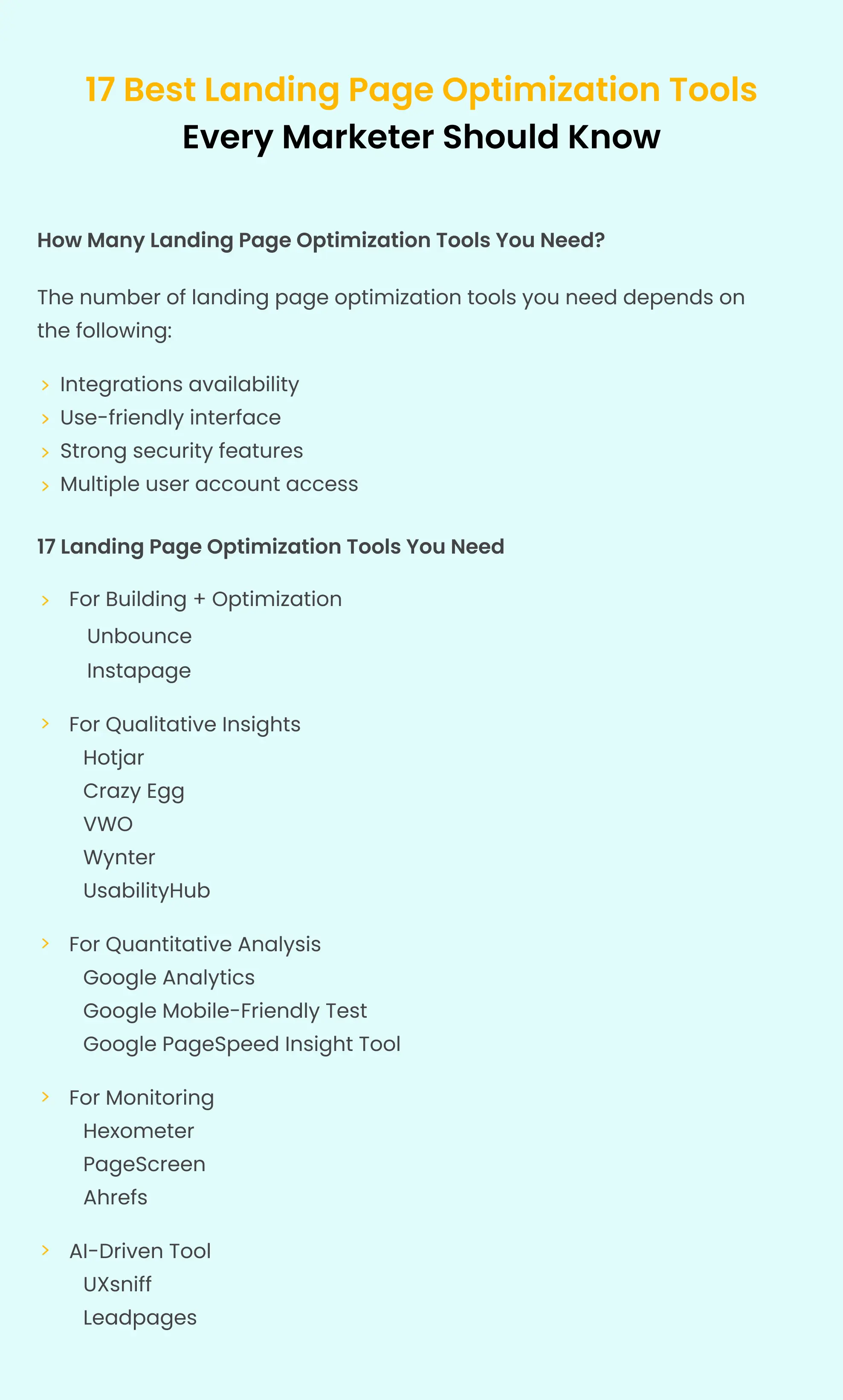
Related Article:
Drive More Sales or Leads With Conversion Focused Websites and Landing Pages
Get Started
As artificial intelligence continues to evolve, businesses are finding innovative ways to enhance their marketing efforts. One of...
Tools to create wireframes with AI make it easier for product managers to put ideas into action fast....
Get quality posts covering insights into Conversion Rate Optimisation, Landing Pages and great design